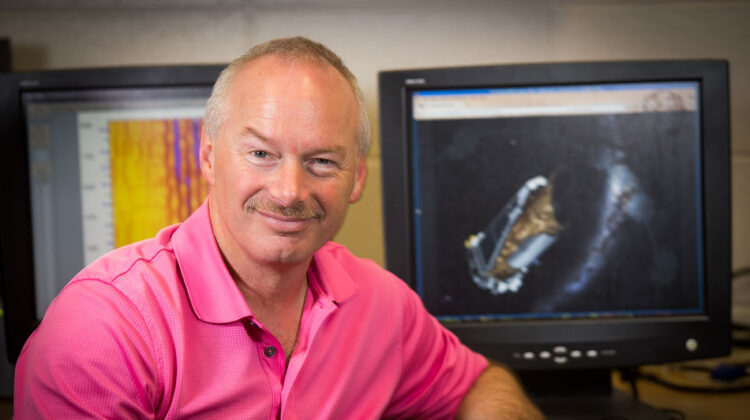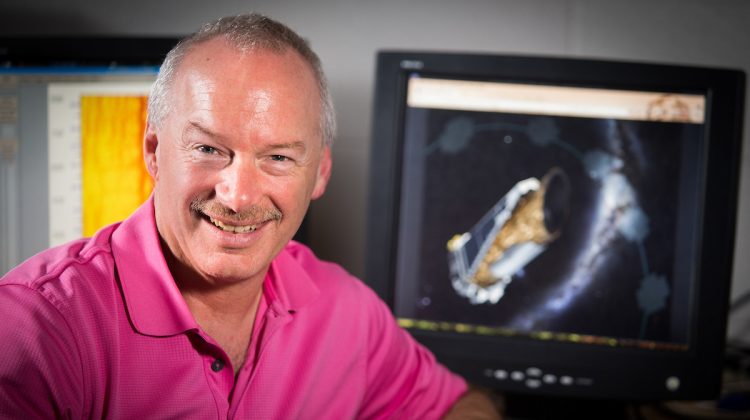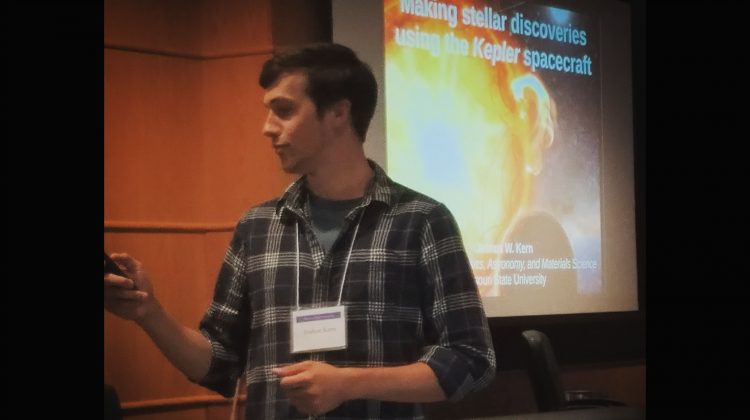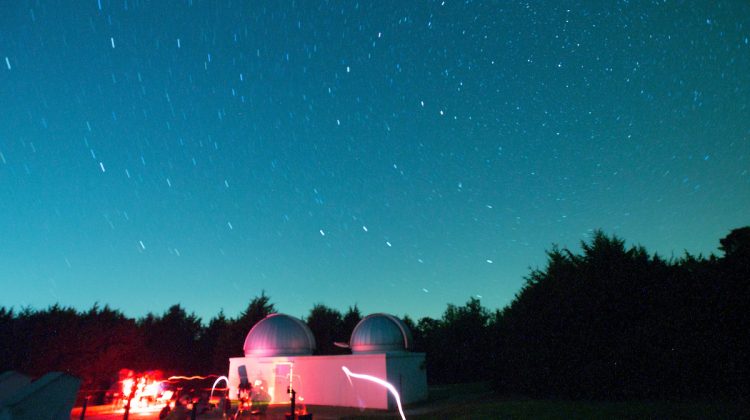Missouri State University Bears are better together. Seniors Meredith Vogel and Yadira Gaibor of the department of physics, astronomy and materials science (PAMS) have come to know this well during their time at Missouri State. Both will graduate from the university this spring. They reflect on their shared experiences in the department and their diverging paths … [Read more...] about Science Bears find growth in their field and friendship
While the science of astronomy originated centuries ago, our understanding of late-evolution stars has origins in more recent decades. The creation of NASA’s Kepler space telescope made studying such stars and their detailed set of vibrations possible. In his paper, "K2 observations of the pulsating subdwarf B stars UY Sex and V1405 Ori,” Dr. Mike Reed studies the traits … [Read more...] about Reading the stars through Kepler’s map
Dr. Mike Reed, two students, Laura Katzer and John Crooke, and several international collaborators recently published work on evolved (subdwarf) stars. Their paper, entitled, “Two p-mode dominated subdwarf B pulsators in binaries with F-star companions observed with K2” analyzed seismic reading of stars found with the Kepler space telescope. About their research Reed, … [Read more...] about Exploring the stars, one vibration at a time
We've walked on the moon. We've discovered new planets. However, one thing that is difficult to understand are the insides of stars. When we look at stars with telescopes, we only see the outer layers. At Missouri State University, we've been lucky to look at stars with one of the most influential telescopes ever made: the Kepler space telescope. Though it’s not as easy … [Read more...] about Learn about the stars without leaving Earth
Much like snowflakes, no two stars are alike. Stars vibrate differently, are spaced differently and usually when they are studied, there are more questions to answer. The Kepler space telescope is on a mission to study the stars — but only select areas. Dr. Mike Reed, professor of astronomy, has had the unique opportunity to choose the stars to study. After finding the … [Read more...] about Using vibrations to map the stars





